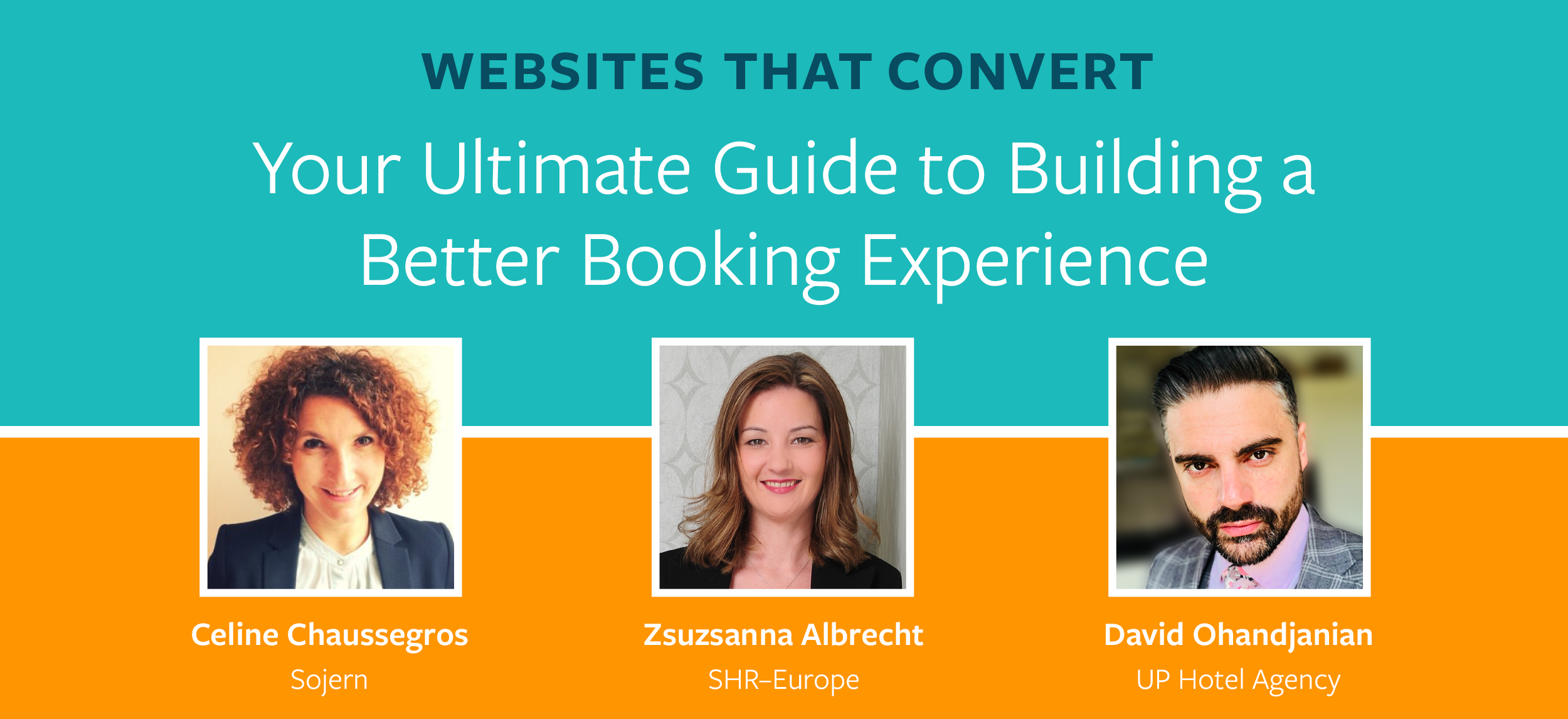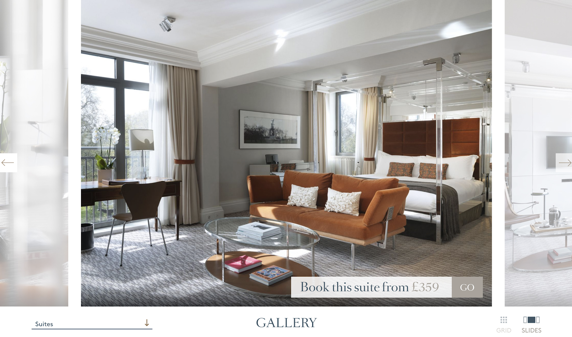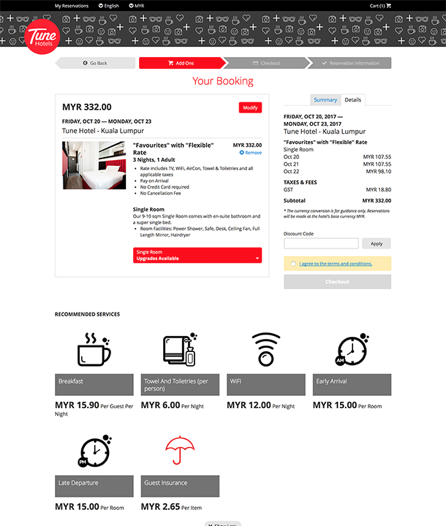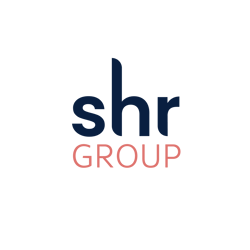For the German version of this article, please click here.

Contributed by Zsuzsanna Albrecht, Regional VP of Sales, SHR-Europe
While there has never been more choice when it comes to hotel website features and strategies than there is now, being able to make the most of those choices has become more challenging. This is why, in a recent webinar, we joined forces with Sojern’s Regional Sales Director EMEA, Celine Chaussegros, and Up Hotel Agency Founder, David Ohandjanian, to map out your best bets for increasing guest delight and conversions on your hotel website and in your booking engine.
Where We've Been and Where We're Going
Celine started us off by walking us back in time to when advertising was relatively simple. It was a mass conversation, adapted to an enlarged audience who would potentially be interested in your product. The hope was that more impressions would result in more sales. But with the rise of the OTAs, meta-search, and search engine marketing, it’s now the consumer who is in control, searching, consulting customer reviews, and mastering the stages of booking. So, in the end, the consumer is the one deciding if he or she books with you directly or not. To illustrate this, Celine introduced Sojern’s Path to Purchase report published last year. In this report, Sojern offered a look at eight paths to purchase using real traveler data, spanning verticals, regions, and trip motivations. What emerged was a greater understanding of just how unique each traveler and trip is -- and the importance of having the insights and marketing acumen to speak to travelers as individuals; what we often refer to here at SHR as the audience of one. A traveler profile referred to as “Leslie” is representative as one of the millions of in-market traveler profiles that Sojern was able to access through real-time data. As Celine explained, Leslie has had 116 touchpoints over more than five months to book his trip, with 64 of those points being specific to the hotel product, whether it was on direct sites, OTAs, or metas, versus only 25 for his flight. And that’s only one trip. Imagine the millions of travelers out there doing as many searches as Leslie, or even more. So, the next question is this; how do you actually reach the Leslie’s of the world with the right message at the right time in order to inspire them to visit your website in the first place?
As Celine explained, thankfully, you no longer need to guess which sites your target customer might visit. With programmatic display advertising, you can go where your customers are, not where you think they might be. Your ads can now be targeted to a focused audience thanks to strategic data and algorithms. And with real-time bidding added to the mix, you can reach travelers on their favorite sites. This drives a more effective one-on-one conversation with your travelers as you meet them where they are -- where they demand to be met. It also ensures you’re reaching your ideal customer; those who have shown intent to visit your destination, as well as shown a history of staying at hotels like yours. In addition, it can help influence a traveler’s decision early in their booking journey in the dreaming and planning phases in your favor, as well as allow you to track the effectiveness of your campaign, helping to ensure that you’re only paying to serve advertising to your intended customer.
Your Best Hotel Website -- Designed to Be Responsive
So, once they’re on your website, how do you keep travelers there? Here’s where David took over for us to speak to maximizing booking opportunities on your site. As David said, there’s usually lot of time focused on how to drive traffic to your website, however making sure the visitor has the highest chance of converting there is often overlooked. One key to upping your chances of conversion is understanding the difference between a responsive website and a site that has been designed to be responsive. With the increasing growth in both usage and revenue from mobile devices, ignoring this difference can block your success. But, you say, my website is responsive already! It fits on a range of screen sizes. The difference, though, is that designed to be responsive means that true design and layout consideration has been given to key sizes of various screens. So rather than simply visually squashing down content to fit a screen, things like the layout, speed, and device capabilities are carefully considered in advance. Giving this subject serious thought is key to successfully improving conversions across the growing traffic base for a range of devices. For instance, desktop is losing market share these days, what with so many younger travelers booking entire trips on smart phones. But potential guests, especially in the bleisure market, still like to review the official hotel website. Why? Generally, they use the brand site to verify the hotel and suitability before making a final decision. So, to be able to sell your hotel offering, make sure your website provides the best source of information and visuals, presented in a professional manner. The goal is to engage the user to remain on your brand website.

What areas should you pay special attention to for this to happen? First on the list, you need great imagery to allow your hotel to have the richest visual information. Next is text, but keep it simple. There’s no need to stuff your site with keywords. Well-chosen language that captures your essence is enough. And don’t forget about video! Not a full home movie, but engaging clips, maybe even just snippets, that you can add to gallery sections. Next is room type. David told us he still struggles at times to distinguish the differences between certain room types on hotel websites. So, there should definite distinctions for clarity and upgrades to keep this from happening. Ask yourself, why would a guest pay more for this room? This should also be carried through to the Internet Booking Engine (IBE). Then, there are Unique Selling Propositions (USPs). Understand what your USPs are, boil them down to their essence, and repeat them across your site. Some hotels use repeated icons or special graphics to highlight throughout their websites. Last but not least is location. This is very important to your visitors’ decision-making process, so make it easy to find the location of your property, and include distances to key landmarks if they are close and a good draw.
As David mentioned, it’s always surprising what guests have to go through on a hotel website just to get an idea of offering costs. This is why, despite being a rich source of information, the hotel site should still function as an optimized ecommerce website, which means optimizing UX and navigation, plus speed. This is one reason why you want a CRS that can work with your API and pull through contextual rates to the front-end of your website giving the user an immediate idea of pricing for the various room types. The effect of all these improvements? Increasing visits to the booking engine and hiking up conversion rates.
Making Your IBE Work for You -- and Your Guest
I picked up the discussion at that point, and expanded on the task of having a responsive website and deep integrations in your booking engine as yet another key to more conversions. This means making sure it’s easy to book on any device. Though it may be tempting, don’t create your own app. Designing your site to be responsive is just enough for most hotels and will not over burden the guest. Also, though it may seem like a small detail, make offer boxes mobile friendly. If the button is too small or hard to find, you may lose a potential guest. Make sure you don’t have long load times. According to recent surveys, 47% of people expect a mobile web page to load in two seconds or less, and 65% of same-day hotel reservations are made from a smartphone. With so many bookers doing so much on mobile and so quickly, if you don’t provide a fast, mobile-friendly experience, you’re going to be losing travelers and conversions.
So, once guests are on your booking engine, how do you keep them there? As David mentioned, make sure you have appealing images and descriptions loaded up, but also control what you offer and how you offer your products. Ask yourself some key questions; What do you want to sell first? Rooms, or rates, or an experience? Maybe you’d like to highlight featured products or special promotions? Do your guests prefer a list or a grid view? Analyze and monitor what converts best for your hotel and configure your IBE based on those needs. Another way to increase conversions is to use persuasive messaging. For example, when guests can see a feature like strike-thru, they can see and feel value instantly. Another way to instill confidence in your guests is to show how often an offer has been purchased. Once they see that a particular offer has been bought 486 times, for example, in the last two days, they tend to feel more comfortable about making that booking decision. You can also increase the sense of urgency by showing how many rooms are left for sale in each category.
Ensuring a Seamless Booking Experience
When you think “seamless,” think “consistent.” If you’re using a specific photo marketing a package, for instance, you want that same photo to show up when they book. It’s also important to have a booking engine where labels can be overwritten, using the same wording throughout the whole process. In other words, don’t confuse your guests by using the word “package” on the website and then “arrangements” on the IBE, or “book now” on one side and “reserve” on the other. The easier the guest can navigate, the faster the booking, the higher the conversion rate will be. For specific target audiences, it also makes sense to provide a dedicated URL and landing page. Set up access codes or promo codes that you can use for email marketing and social media campaigns. Corporate accounts and groups love this kind of personalized attention. Another great way to increase direct bookings is to provide member-only rates. Offer a discount or additional benefits for registered guests only, and you might just begin to beat out the OTAs more often. And here’s another benefit of this technique. Even though you may not utilize a full-blown CRM yet, you can still increase loyalty by setting up member rates in your CRS. Once the guest has registered once, all future bookings can be made significantly faster and more convenient for the guest. You can shift even more share from OTAs to direct bookings by promoting member rates at the front desk as well.

A common problem during bookings is that sometimes rates or promotions are not available for the whole period the guest is requesting. You can avoid showing non-available-messages by using blended rates. Say for instance that your guest makes a request for a three-night stay with arrival in seven days. For the first night, the advance purchase rate is still available, but for the second and third night, only the best available rate will be open to be booked. So, the guest either needs to make two separate bookings—or go straight back to an OTA that will allow rate mixing in one booking. We certainly don’t want that, so make sure you use a CRS which provides a blended rate functionality. Most of the time hotels have by far more to offer than just rooms. So, grab additional revenue by using add-ons. Add-ons allow your guests to customize their stay the way they prefer to get the best possible experience. Almost anything can be set up as an add-on, but you may have limited parking spaces or a limited number of late check-outs to sell per day, so make sure you can load inventories to avoid overbookings. Maybe you can offer dinner bookings or wellness treatments? Allow your guests to schedule those directly by date and time. This is not only convenient for your guests, but also for you as no further follow up by phone is needed. Last but not least, at the end of the booking process you should provide an opportunity to upgrade the room type. Guests are more likely to spend an additional small amount at the end of the booking process than at the beginning when purchasing a higher category room.
As we know, an increase in ADR flows all the way to the bottom line, which can mean seeing more profits, faster. But sometimes the guest is not able to make a decision instantly. This could be the case if, for example, the guest requires approval from the company or if a leisure traveler needs to consult their partner first. So, why not offer an opportunity to save the efforts the booker has already made? With a saved state feature, they can receive a link to their shopping cart by simply adding their email address. The guest can then share that link and later use the same link to continue the booking where they left off.
What You Can Do Today!
While some of what we discussed requires a bit more planning and strategy before execution, there are plenty of things you can do right now to improve your hotel conversions. Remember to:
- Understand and target the traveler, not the travel site
- Use programmatic display advertising and real-time bidding
- Showcase your USPs to make your site the best and easiest place to book online
- Drive traffic from a range of sources and track effectiveness, continually improving
- Provide a seamless booking experience with a clear call to action
- Make it as easy as possible for guests to book and customize their stay to boost your hotel revenues
If you can do even some of these and do them consistently, you will be going a long way toward increasing your revenues while delighting and retaining more guests, and boosting your brand in the process.


